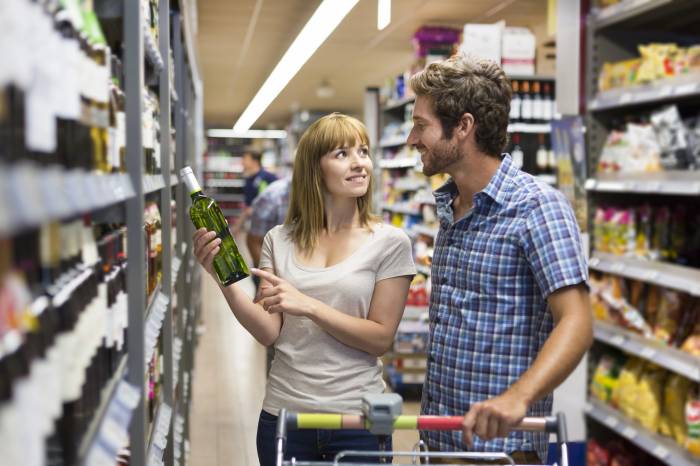Non-Alcoholic Drinks Gain Popularity Amid Debate Over Triggers and Moderation
Experts and consumers weigh benefits and risks as alcohol-free options expand in bars, shops, and social settings across the US and UK
2025-09-05

Market research from NielsenIQ shows that retail sales of non-alcoholic wine, beer, and spirits reached $823 million last year in the United States. The data also reveals that more than 90% of customers who buy non-alcoholic drinks also purchase alcoholic beverages. This suggests that many consumers are using these products to moderate their alcohol intake rather than abstain completely.
The debate over whether non-alcoholic drinks that mimic alcoholic beverages can trigger cravings for full-strength alcohol has gained attention among health experts and teetotalers. The discussion centers on whether these alternatives, which are increasingly available in bars and shops, might encourage some people to return to drinking alcohol.
Laura Willoughby, co-founder of Club Soda, a group that promotes mindful drinking, explained that the response to alcohol-free drinks is highly individual. She said that while some former drinkers avoid these products because they find them triggering, others embrace them as part of their alcohol-free lifestyle. Willoughby herself has been alcohol-free for 13 years and does not find non-alcoholic drinks problematic. She noted that people come to sobriety through many different paths, and there is no single experience that fits everyone.
Logan Denzer, a Los Angeles-based teetotaler, shared in a recent Medpage journal that many people choose non-alcoholic alternatives to feel more comfortable in social settings. Denzer pointed out that the growing variety of 0% ABV options in bars helps people who want to participate in social rituals without consuming alcohol.
In the United Kingdom, demand for inclusive beverage options has led to a significant increase in the availability of no- and low-alcohol drinks. According to industry data, 86% of UK pubs now offer at least one no- or low-alcohol beer, up from 77.8% in 2019. Major beverage companies are responding to this trend; Asahi, for example, aims to increase its non-alcoholic production share by 20% by 2030.
Marcos Salazar, spokesperson for the Adult Non-Alcoholic Beverage Association, described a pattern called “zebra striping,” where people alternate between alcoholic and non-alcoholic drinks during social occasions. He emphasized that this approach is different from total abstinence but reflects a desire for greater control over drinking habits.
Ann Kopp Mitchell, a retiree who recently sampled non-alcoholic beverages at Monday Morning Bottle Shop in San Diego, said she sometimes uses zebra striping herself. She enjoys having an alcoholic drink on special occasions but then switches to non-alcoholic options to maintain her social routine without overindulging.
Stanford University researcher Molly Bowdring cautioned that non-alcoholic beers and spirits are not suitable for everyone. She explained that these products can contain cues associated with alcohol consumption—such as taste and appearance—which may trigger cravings in some individuals with a history of alcohol problems. Bowdring advised those in recovery or early sobriety to be especially careful when considering these alternatives.
Denzer echoed this concern, recalling how she and her friends initially avoided non-alcoholic drinks after quitting alcohol because they associated the taste with real beer. Over time, however, they became more open to trying these products as their confidence in sobriety grew.
Willoughby observed that many people now exploring non-alcoholic options are not necessarily seeking drinks that mimic traditional alcoholic beverages. She noted an increasing interest in products like shrubs, sparkling teas, and botanicals—drinks that do not resemble beer or spirits but still offer an adult drinking experience.
Willoughby also highlighted another potential trigger: sugar. She pointed out that sugary sodas can stimulate dopamine levels similar to alcohol and may prompt cravings for some individuals. For this reason, some people prefer low-sugar adult alcohol-free drinks.
The American Heart Association recommends limiting added sugars to six teaspoons per day for women and nine teaspoons per day for men. A standard 12-ounce can of soda can contain about ten teaspoons of sugar, underscoring the importance of monitoring sugar intake when choosing non-alcoholic beverages.
Club Soda’s mission is to make alcohol-free drinks more acceptable and accessible as part of a broader effort to support healthier choices and reduce the social pressure to drink alcohol. Willoughby hopes that by normalizing these alternatives, society will see fewer problems related to excessive drinking over time.
The ongoing discussion among health experts and those with lived experience highlights the complexity of choosing non-alcoholic alternatives. While these products offer valuable options for many people seeking moderation or abstinence, they may not be suitable for everyone—especially those early in recovery or sensitive to triggers associated with traditional alcoholic beverages. The consensus among experts is that individual experiences vary widely and personal awareness is key when navigating these choices.
Founded in 2007, Vinetur® is a registered trademark of VGSC S.L. with a long history in the wine industry.
VGSC, S.L. with VAT number B70255591 is a spanish company legally registered in the Commercial Register of the city of Santiago de Compostela, with registration number: Bulletin 181, Reference 356049 in Volume 13, Page 107, Section 6, Sheet 45028, Entry 2.
Email: [email protected]
Headquarters and offices located in Vilagarcia de Arousa, Spain.